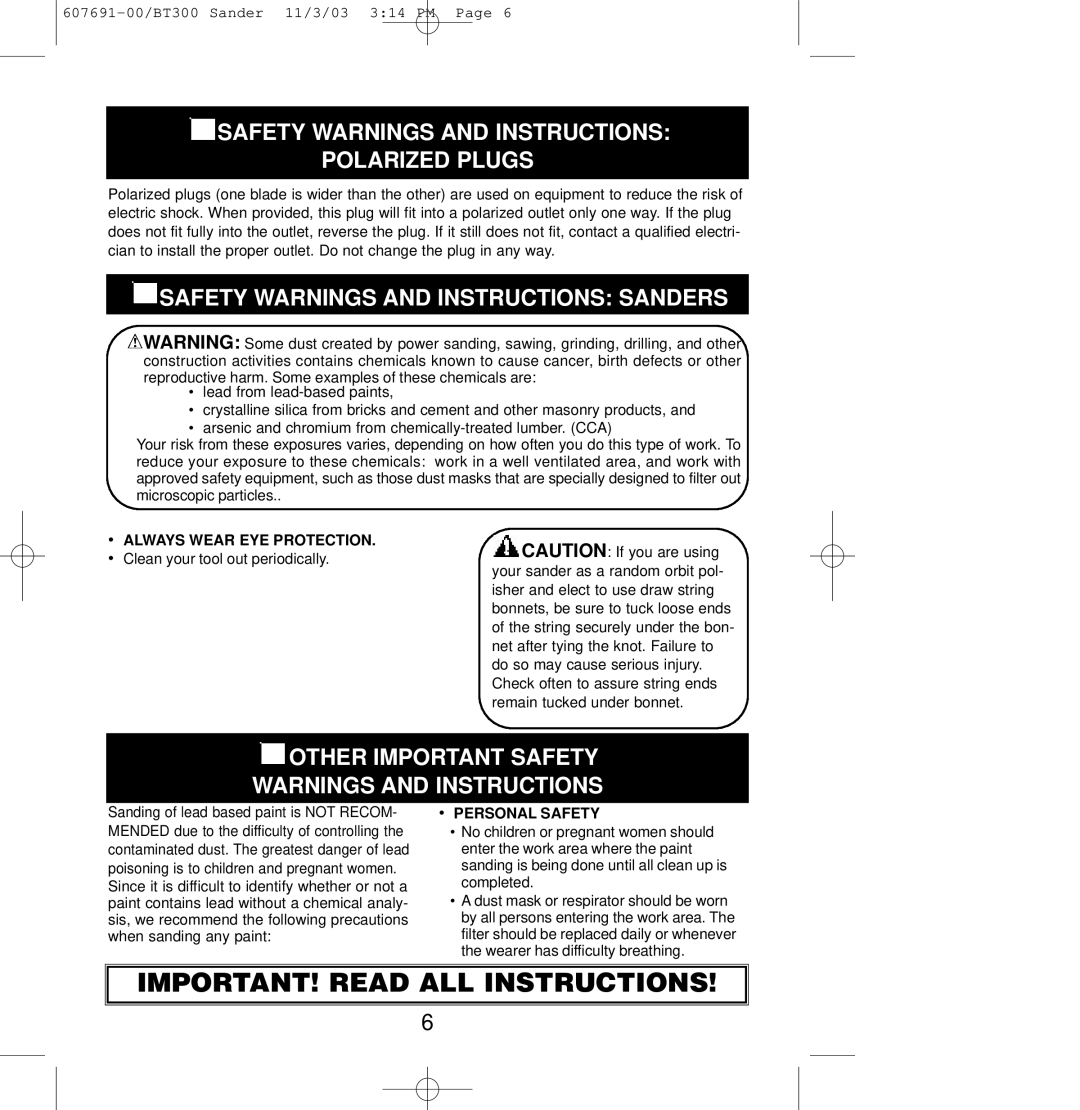BT300, 607691-00 specifications
The Black & Decker 607691-00, also known as the BT300, is a versatile and powerful tool designed to meet the needs of both DIY enthusiasts and professional tradespeople. This tool stands out in the market due to its innovative features, advanced technologies, and impressive specifications that enhance efficiency and precision in a multitude of applications.One of the main features of the BT300 is its robust motor, which provides reliable power to handle a variety of tasks. With a strong and efficient design, the motor is capable of delivering consistent performance, allowing users to tackle heavy-duty jobs without compromising on results. The BT300 is particularly well-suited for cutting, sanding, and shaping various materials, making it an essential addition to any toolkit.
The tool boasts an ergonomic design that prioritizes user comfort and control. The handle is designed to fit comfortably in the hand, reducing fatigue during extended use. This feature is particularly important for professionals who rely on their tools for long hours. The lightweight construction of the BT300 further enhances maneuverability, making it easy to operate in tight spaces or overhead applications.
One of the standout technologies in the BT300 is its variable speed control. This allows users to adjust the speed settings according to the specific task at hand, providing greater versatility. Whether it’s a delicate sanding job or more intensive cutting work, the variable speed feature ensures optimal results for every project. Additionally, the BT300 comes equipped with a dust collection system that helps maintain a clean workspace, minimizing mess and enhancing visibility during operation.
The BT300 also includes a quick-change accessory system, enabling users to swiftly swap out different attachments without the need for additional tools. This feature enhances productivity and minimizes downtime, particularly useful for contractors working on multiple projects in a day.
Durability is another key characteristic of the Black & Decker BT300. Constructed from high-quality materials, the tool is built to withstand the rigors of daily use, ensuring longevity and dependable performance over time.
In summary, the Black & Decker 607691-00 BT300 is a feature-rich tool that combines power, comfort, and versatility. With its robust motor, ergonomic design, variable speed control, and efficient dust collection system, it’s a reliable choice for anyone looking to elevate their craftsmanship. Whether for home improvement tasks or professional applications, the BT300 stands out as a top-tier solution for various cutting and sanding needs.

